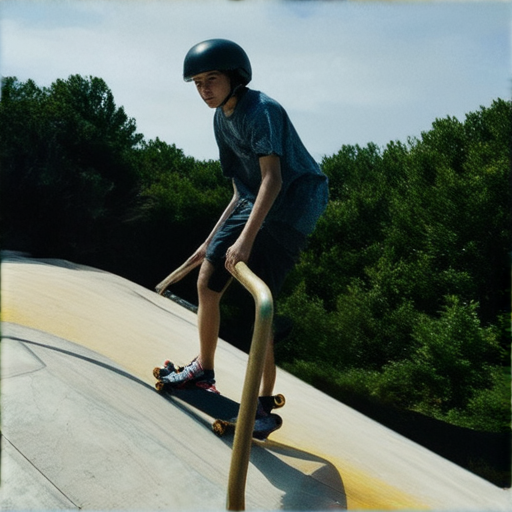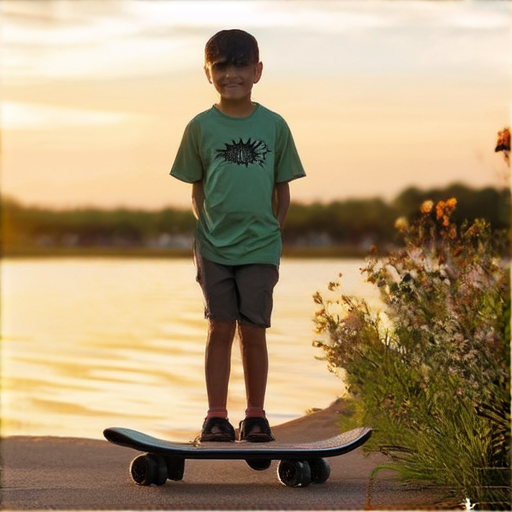Mastering the art of basic skateboard tricks is an exciting milestone for any aspiring skater, offering a solid foundation for progression into more complex maneuvers. Whether you’re a complete beginner or looking to refine your skills, understanding what constitutes a basic skateboarding trick is essential for building confidence and developing muscle memory. From the simple skateboard jump to the fundamental ollie, these foundational tricks form the backbone of any skater’s repertoire, allowing for effortless transitions between different skateboarding styles.
As a beginner, it’s natural to feel overwhelmed by the numerous skateboarding tricks available, but focusing on mastering the basics first is crucial for long-term success. By dedicating time and effort to perfecting these fundamental skills, you’ll unlock a world of possibilities, enabling you to tackle even the most challenging tricks with ease. In this comprehensive guide, we’ll delve into the world of basic skateboard tricks, exploring the types, importance, and progression from basic to advanced, ensuring that you’re well-equipped to take your skateboarding journey to new heights.

A Basic Skateboarding Trick
The fundamental skateboarding trick every beginner should master is the ollie, which involves jumping and keeping the board stable underfoot.
Understanding the Ollie Technique
To perform an ollie, start by crouching down low over the board with your dominant foot on the tail and your other foot near the nose. Snap the tail downward to pop the board into the air, then catch it with your wheels facing forward.
Key Components of the Ollie
– Positioning: Keep your weight centered over the board with your knees bent and your arms out for balance.
– Foot placement: Place your front foot near the nose and your back foot on the tail.
– Tail snap: Snap the tail downward to initiate the pop.
– Catch: Catch the board with your wheels facing forward and your knees still bent.
Tips for Mastering the Ollie
– Practice regularly to develop muscle memory and improve your technique.
– Start with small jumps and gradually increase the height as you gain confidence and control.
– Focus on smooth transitions between the push-off and the catch to maintain stability and balance.
Common Mistakes to Avoid
– Not snapping the tail hard enough to initiate the pop.
– Not catching the board with your wheels facing forward.
– Losing balance during the transition from push-off to catch.
Once you’ve mastered the ollie, you can progress to more advanced tricks like kickflips and heelflips, which require additional skills and practice. Remember to always warm up before attempting new tricks and to stay safe by wearing proper protective gear.
The Simple Skateboard Jump
A fundamental skill for any skateboarder, the simple skateboard jump is a versatile trick that can be mastered with practice and patience.
Understanding the Basic Mechanics
- To perform a simple skateboard jump, start by crouching at the knees and bending forward slightly.
- Pop the tail of your board by snapping it downwards, which will cause the board to lift off the ground.
- As the board rises, quickly shift your weight onto your front foot and bring your back foot up to meet it.
- Keep your knees bent and your weight centered over the board to maintain balance.
Key Tips for Mastering the Simple Skateboard Jump
- Practice Pop and Catch: Develop the ability to pop the tail of your board smoothly and catch it with confidence.
- Focus on Balance: Maintain good posture and keep your weight centered over the board to ensure stability.
- Start Low: Begin with small jumps and gradually increase the height as you build confidence and skills.
- Stay Relaxed: Keep your muscles relaxed and avoid stiffening up, as this can throw off your balance.
Common Mistakes to Avoid
- Over-rotation: Be careful not to rotate too much, as this can cause you to lose balance and fall.
- Insufficient Pop: Make sure to snap the tail of your board firmly to get enough lift-off.
- Poor Foot Placement: Keep your feet close together and centered over the board to maintain balance.
Progressing to More Complex Tricks
Once you’ve mastered the simple skateboard jump, you can progress to more complex tricks by adding variations such as:
- Heelflips: Add a heelflip to your jump for extra style and flair.
- Kickflips: Try kickflipping your board for added difficulty and challenge.
- Combos: Link multiple jumps together for a seamless flow.

Mastering the Ollie for Beginners
Learning to ollie on a skateboard can seem daunting, but with practice and patience, anyone can master this fundamental trick.
Understanding the Basic Movement
- Popping: Snap the tail of your board downwards to create a small jump, known as a “pop.”
- Dragging: As you leave the ground, quickly push off with your front foot to glide over the board.
- Lifting: Bring your front foot up towards the nose of the board, keeping your knee bent and weight centered.
Key Tips for Success
- Positioning is crucial: Stand with your dominant foot on the tail of the board and your other foot on the nose, with your knees bent and weight evenly distributed.
- Snap the tail: Use your back foot to snap the tail downwards, creating a small jump.
- Timing is everything: Practice popping and dragging simultaneously, focusing on the exact moment when you leave the ground.
- Keep your knees bent: Maintain a low center of gravity by bending your knees and keeping your weight centered over the board.
Common Mistakes to Avoid
- Over-snappping: Don’t snap the tail too hard, as this can cause you to lose balance and fall.
- Not lifting enough: Make sure to bring your front foot up high enough to catch the board and maintain control.
- Looking down: Keep your eyes focused on the horizon or a point ahead, rather than looking down at the ground.
Practice Makes Perfect
Remember, mastering the ollie takes time and practice. Start with short sessions and gradually increase your duration as you build confidence and skill.

Getting Started with Skateboarding as a Beginner
Mastering the art of skateboarding requires patience, persistence, and practice. As a beginner, it’s essential to approach this new skill with caution and a willingness to learn.
Preparation is Key
- Invest in proper equipment: A good pair of skateboarding shoes, comfortable clothing, and a helmet can help prevent injuries and provide confidence.
- Choose a safe location: Find a flat, smooth surface with minimal obstacles, such as a skate park, empty parking lot, or designated skate area.
- Adjust your board: Make sure the trucks are tightened and the wheels are inflated to the recommended pressure.
Learning Techniques
- Start with balancing exercises: Stand on the board with your dominant foot on the tail and practice shifting your weight, leaning, and balancing.
- Practice gliding and pushing: Get used to moving on the board by gliding and pushing with one foot while keeping the other foot on the tail.
- Learn to stop safely: Master the “tail drag” and “heel stop” techniques to come to a smooth stop.
Overcoming Fears and Challenges
- Accept the fear of falling: Falling is an inevitable part of learning, so focus on rolling with the punches and getting back up.
- Build momentum gradually: Start with short sessions and gradually increase the duration as you build confidence and skills.
- Stay relaxed and focused: Maintain a relaxed stance, keep your knees bent, and stay focused on your surroundings.
Additional Tips
- Watch tutorials and online lessons: Observe experienced skaters and learn new techniques through online resources.
- Join a skate community: Connect with fellow beginners and experienced skaters to share tips, advice, and motivation.
- Be patient and persistent: Learning to skateboard takes time, effort, and dedication – don’t get discouraged by setbacks or frustrations.
When Should Children Start Skateboarding?
Skateboarding can be a fun and rewarding activity for kids, but it’s essential to consider their physical and emotional readiness before introducing them to this sport. While some children may show interest in skateboarding at a young age, others might need more time to develop the necessary skills and confidence.
Factors to Consider Before Starting Skateboarding
Before deciding when to introduce your child to skateboarding, consider the following factors:
- \* Physical Development: Children should have developed sufficient strength, balance, and coordination to handle the demands of skateboarding.
\* Emotional Maturity: Kids should be able to follow instructions, take risks, and manage their emotions while riding a skateboard.
\* Safety Awareness: Children should understand the importance of wearing protective gear, such as helmets and knee pads, and be aware of potential hazards like rough surfaces and obstacles.
Age Range for Starting Skateboarding
While there’s no one-size-fits-all answer, most experts agree that children can start learning basic skateboarding skills around the age of 7 or 8. However, some younger children might be ready earlier, depending on their individual development and aptitude.
At this stage, they can learn fundamental skills like balancing, pushing, and gliding. As they progress, they can gradually move on to more complex techniques like turning, stopping, and jumping.
Benefits of Early Skateboarding Introduction
Introducing your child to skateboarding at a relatively early age can have numerous benefits, including:
\* Improved balance and coordination
\* Enhanced cognitive skills, such as problem-solving and spatial awareness
\* Boosted confidence and self-esteem
\* Opportunities for socialization and making friends through skateboarding communities
Tips for Parents and Guardians
If you’re considering enrolling your child in skateboarding lessons or allowing them to ride independently, keep the following tips in mind:
\* Ensure proper safety equipment, including a helmet, knee pads, and elbow pads
\* Provide a safe and supportive environment, free from distractions and hazards
\* Encourage your child to practice regularly, but not excessively, to avoid burnout and prevent injuries
\* Be patient and offer constructive feedback to help your child improve their skills and build confidence
The Easiest Board to Learn to Skate On
For individuals looking to start skating, selecting the right board can significantly impact their learning experience.
- Longboards: Longboards are often recommended for beginners due to their ease of use and stability. They offer a longer wheelbase, which provides a smoother ride and better balance.
- Drop-through Boards: Drop-through boards are another popular option among beginners. These boards feature a lowered deck, which reduces the ride height and makes it easier to push and maneuver.
Key Considerations When Choosing a Beginner-Friendly Board
When selecting a board, consider the following factors:
- Wheel Size: Larger wheels provide a smoother ride, but may be less suitable for tight spaces. Smaller wheels offer better control, but can be bumpy.
- Deck Width: A wider deck provides more stability, but may be harder to maneuver in tight spaces.
- Truck Size: Larger trucks offer more stability, but may be heavier. Smaller trucks provide better agility, but may be less stable.
Board Size and Height
It’s essential to choose a board that suits your height and riding style. Here are some general guidelines:
- Tall Riders: Look for boards with a length between 33-40 inches and a width between 8-10 inches.
- Average Riders: Choose boards with a length between 28-35 inches and a width between 7-9 inches.
- Short Riders: Opt for boards with a length between 25-32 inches and a width between 6-8 inches.
Additional Tips for Beginners
To ensure a smooth transition into skateboarding, remember:
- Start on flat ground: Find a flat, open area to practice before moving to hills or uneven terrain.
- Practice balancing: Spend time getting comfortable with your stance and balance before attempting to move.
- Take lessons: Consider taking lessons from a qualified instructor to help you develop proper technique and build confidence.

0 Comments